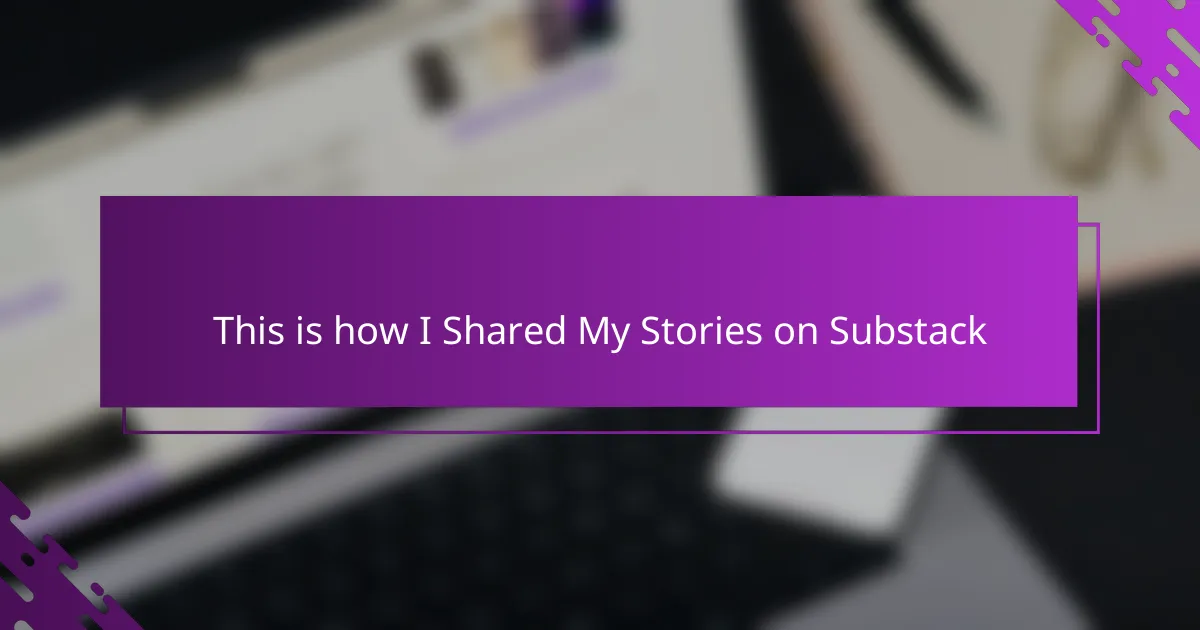Key takeaways
- Personal blogging fosters an intimate connection, allowing writers to share authentically and create community.
- Substack simplifies the process of sharing stories, offering an easy setup and the option to monetize while maintaining a personal touch.
- Engaging content should be honest, varied, and easy to digest, promoting a genuine conversation with readers.
- Growing an audience requires consistency, community engagement, and treating each reader individually to deepen connections.
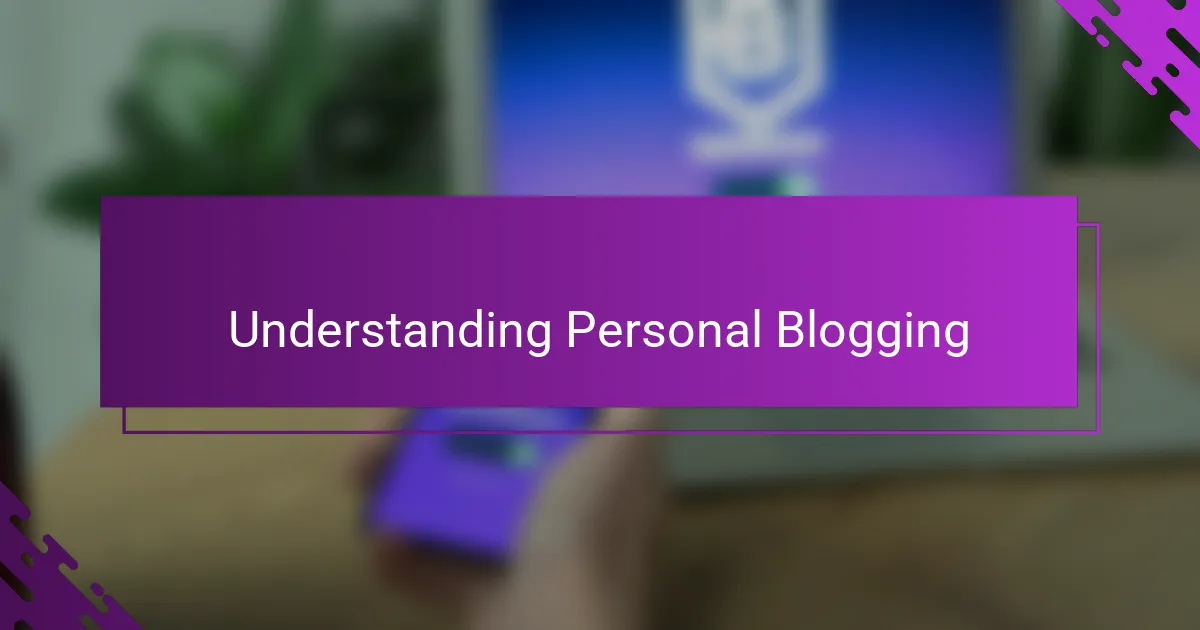
Understanding Personal Blogging
Personal blogging, to me, has always felt like an intimate conversation with a close friend. It’s where you lay bare your thoughts, experiences, and emotions without the pressure of fitting into a rigid format. Have you ever found yourself wanting to share a story but unsure where it would truly be heard? That’s exactly why personal blogging stands out—it gives your voice the space it deserves.
I remember when I first started, it wasn’t about chasing followers or statistics. It was simply about capturing moments and lessons from my life, the kind that often get lost in the daily hustle. This raw, unfiltered approach creates a unique connection between writer and reader, making personal blogging more than just writing—it becomes a shared experience.
Isn’t it fascinating how these personal accounts ripple beyond the individual? They encourage others to reflect on their own journeys, fostering a sense of community grounded in authenticity. That’s the real heart of personal blogging, and it’s why it remains such a powerful medium today.
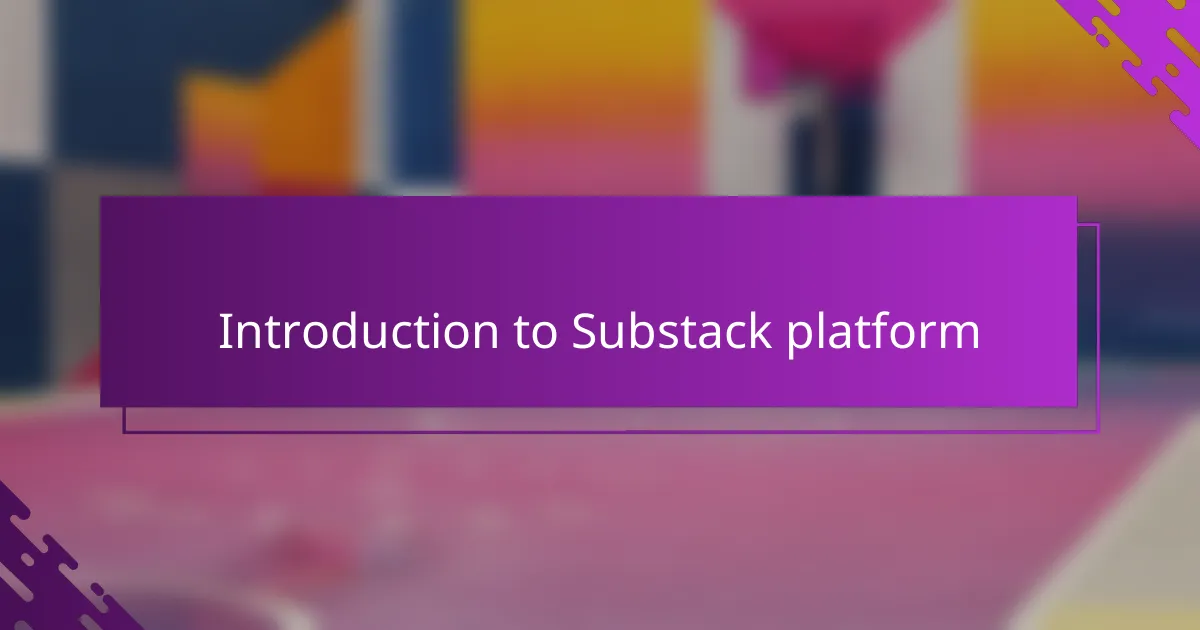
Introduction to Substack Platform
Substack, in my experience, feels like the perfect home for personal storytelling. It’s a platform designed to help writers like me share stories directly with readers, without gatekeepers or complicated setups. Have you ever wished your stories could reach the right audience effortlessly? That’s exactly what Substack offers.
What drew me in was how simple it was to start—no need for technical skills or a flashy website. The beauty lies in its newsletter format, letting me send my stories straight to people who genuinely want to read them. It made sharing feel personal again, almost like writing a letter to a friend.
And here’s something I really appreciate: Substack also gives the option to monetize your work without losing that intimate feel. It’s a way to honor the value of your stories while still keeping authenticity at the core. Have you considered how your stories might connect—and even sustain you—in this way?
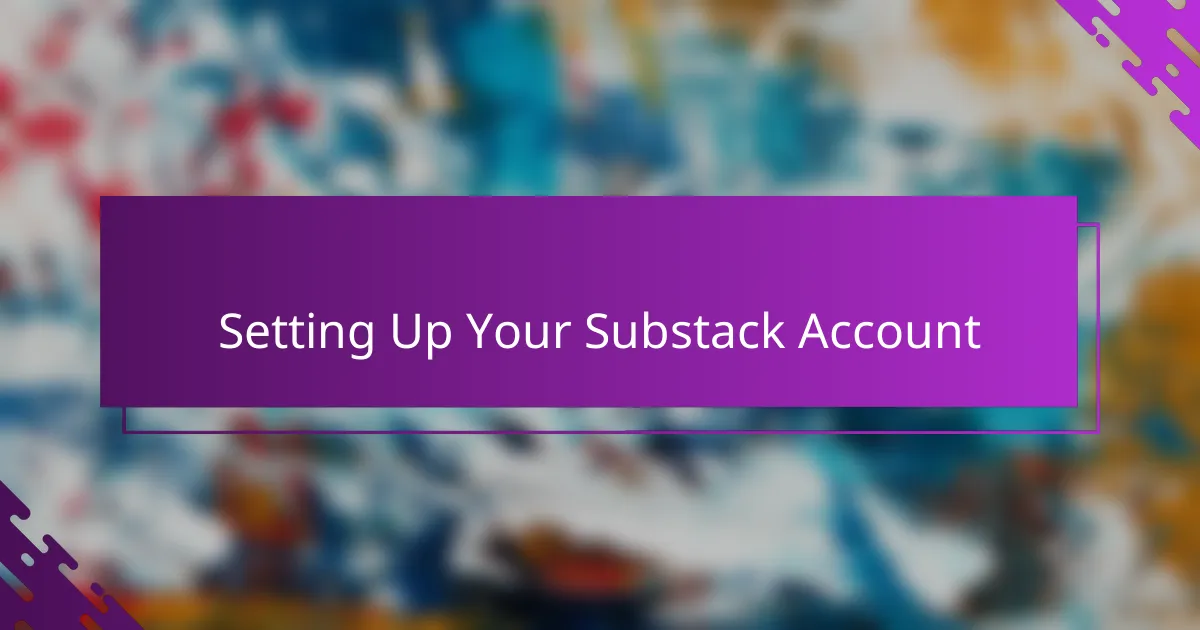
Setting Up Your Substack Account
Setting up my Substack account was surprisingly straightforward. I simply chose a name that felt true to my voice, something that reflected the essence of my stories. Have you ever struggled to pick a name that feels just right? It can be tricky, but I found that staying authentic makes all the difference.
The next step was customizing my page. I kept it simple—just a clean design and a welcoming bio that invited readers in. It felt a bit like setting the scene for a cozy chat, which is exactly the vibe I wanted to create. Do you think your blog should look polished or personal? For me, personal always wins.
Finally, linking my email was key. It’s how I connect directly with readers without distractions. I remember the relief of realizing I didn’t need to build a whole website or learn coding—just a few clicks, and my stories were ready to go. Have you tried other platforms where signing up felt like a chore? Substack’s ease was a refreshing change.
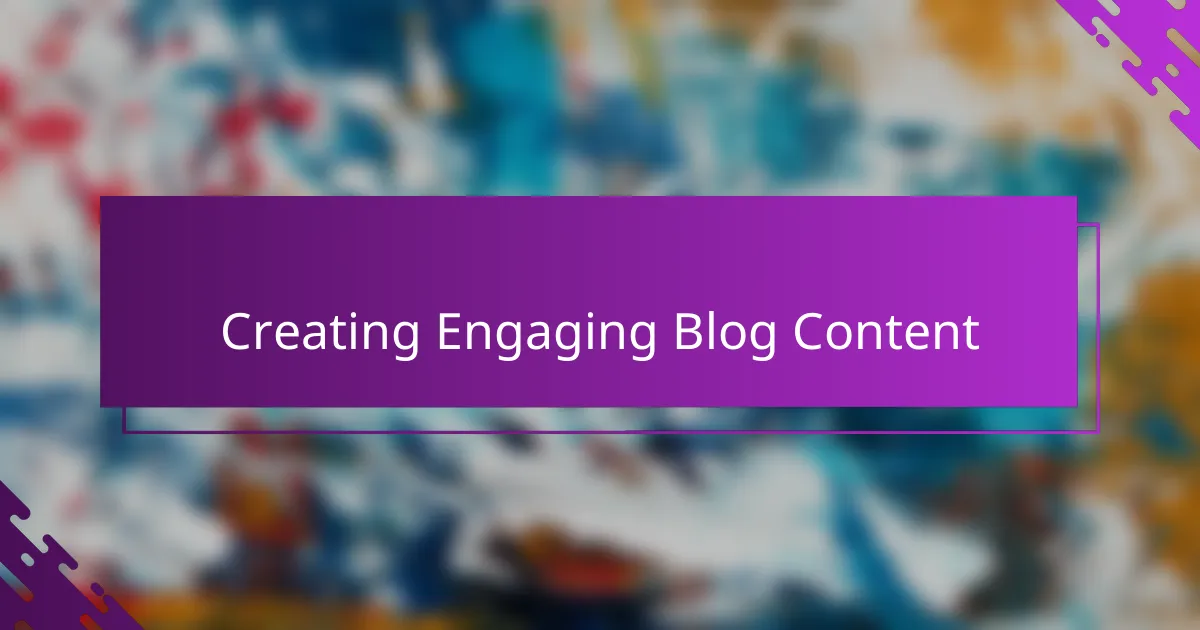
Creating Engaging Blog Content
Creating engaging blog content, in my experience, starts with honesty. When I write, I try to imagine talking to a friend rather than an audience. Have you ever noticed how stories become more captivating when they feel real and relatable? That’s the magic I aim for on Substack—sharing moments that resonate beyond just words.
One thing I learned quickly is that variety keeps readers coming back. I mix personal anecdotes with thoughtful reflections and sometimes a bit of humor. Doesn’t it make sense to give your readers something unexpected every now and then? This approach, for me, turns a simple blog post into a genuine conversation.
I also believe pacing matters more than we often realize. Short paragraphs and clear sentences make the content easy to digest, especially in a newsletter format like Substack’s. Have you ever stopped reading halfway because a post felt like too much work? Crafting content that flows smoothly is how I keep my readers hooked from start to finish.
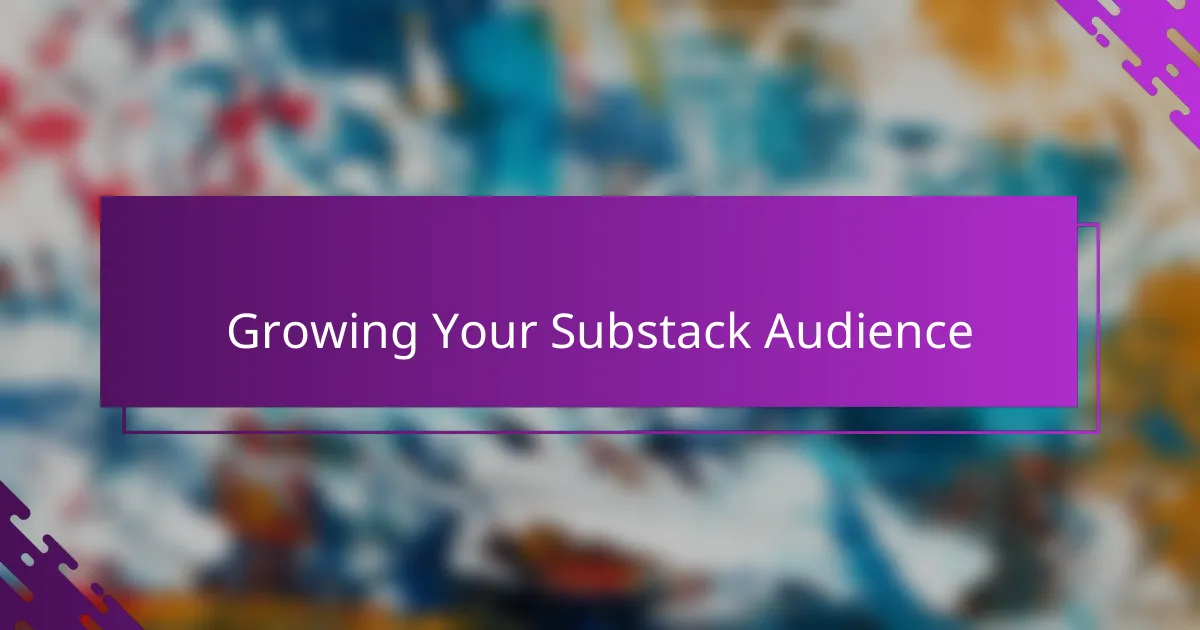
Growing Your Substack Audience
Growing your Substack audience, I’ve found, hinges a lot on consistency. Have you ever noticed how showing up regularly builds a quiet trust with readers? For me, it wasn’t about flooding inboxes but about creating a rhythm people could count on, like waiting for a letter from a friend.
Another thing that helped me was tapping into existing communities. I reached out to friends, shared my posts on social media, and even joined groups that aligned with my blog’s themes. Doesn’t it feel rewarding when you see someone beyond your circle resonate with your story? That sense of connection kept me motivated to keep sharing.
Engagement, honestly, surprised me the most. When I responded personally to comments or even a simple reply to emails, it deepened the bond in ways I hadn’t anticipated. Have you tried treating every reader like an individual rather than a number? That small shift made all the difference in growing my audience organically.
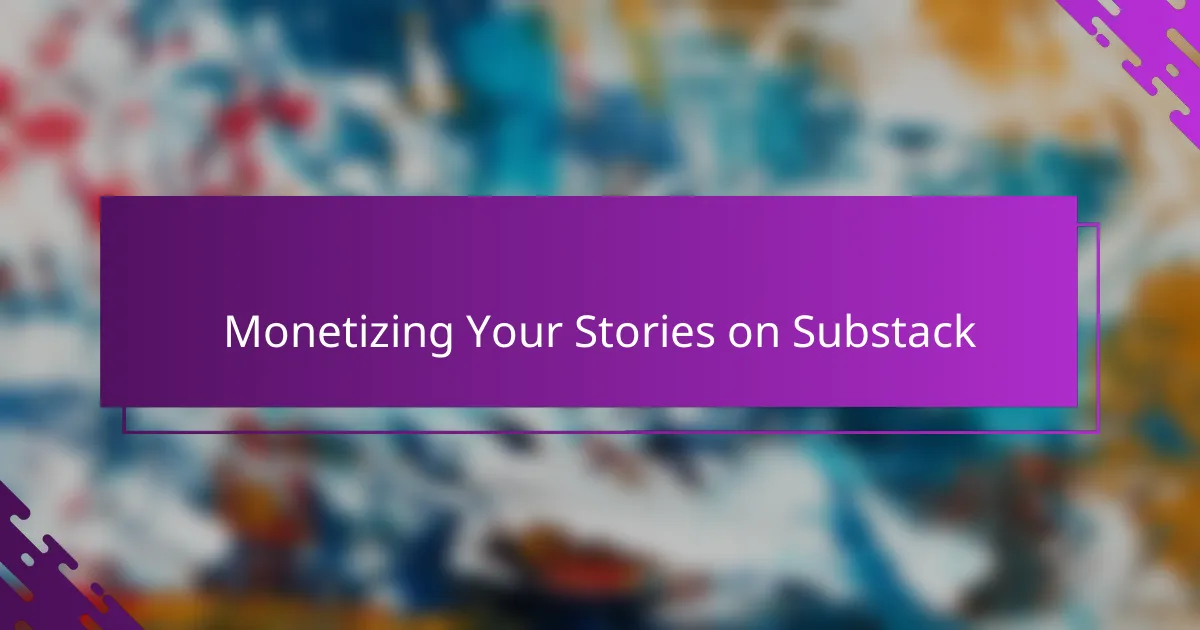
Monetizing Your Stories on Substack
Monetizing your stories on Substack felt like a natural next step for me, but I wondered if putting a price on my words would change the intimate connection I’d built. Surprisingly, it didn’t. Offering paid subscriptions allowed me to honor my readers’ appreciation while sustaining the time I devote to writing—turning passion into a supportive livelihood.
I started small, setting a modest subscription fee that felt fair to both me and my audience. Have you thought about how pricing might affect your reader’s experience? Finding that sweet spot took some trial and error, but what mattered most was making sure every paid edition brought real value—whether a deeper story, exclusive insights, or behind-the-scenes thoughts.
Substack’s built-in tools made the process worry-free. From managing payments to offering free and paid tiers, everything was intuitive and transparent. What I appreciate most is that monetizing didn’t feel like selling out; it felt like inviting readers to become part of the journey, supporting stories that mattered to them as much as they mattered to me.

Reflecting on My Personal Blogging Journey
Looking back at my personal blogging journey, I realize how much it has changed me. There were moments of doubt—wondering if anyone would actually care about my stories—but pushing through those fears brought unexpected rewards. Have you ever felt that mix of vulnerability and excitement when sharing something deeply personal? That tension is where the real growth happens.
Sometimes, I catch myself scrolling through old posts and remembering the emotions I felt while writing them. It’s like revisiting pieces of my own life, frozen in words. This reflection made me appreciate how personal blogging isn’t just about the audience—it’s also a form of self-discovery that evolves over time.
What surprised me most was how this journey helped me find my authentic voice. I started without a clear direction, but with each story, I became more confident and honest. Isn’t it amazing how writing regularly can lead you to understand yourself better than you thought possible? For me, that has been the most rewarding part of all.
